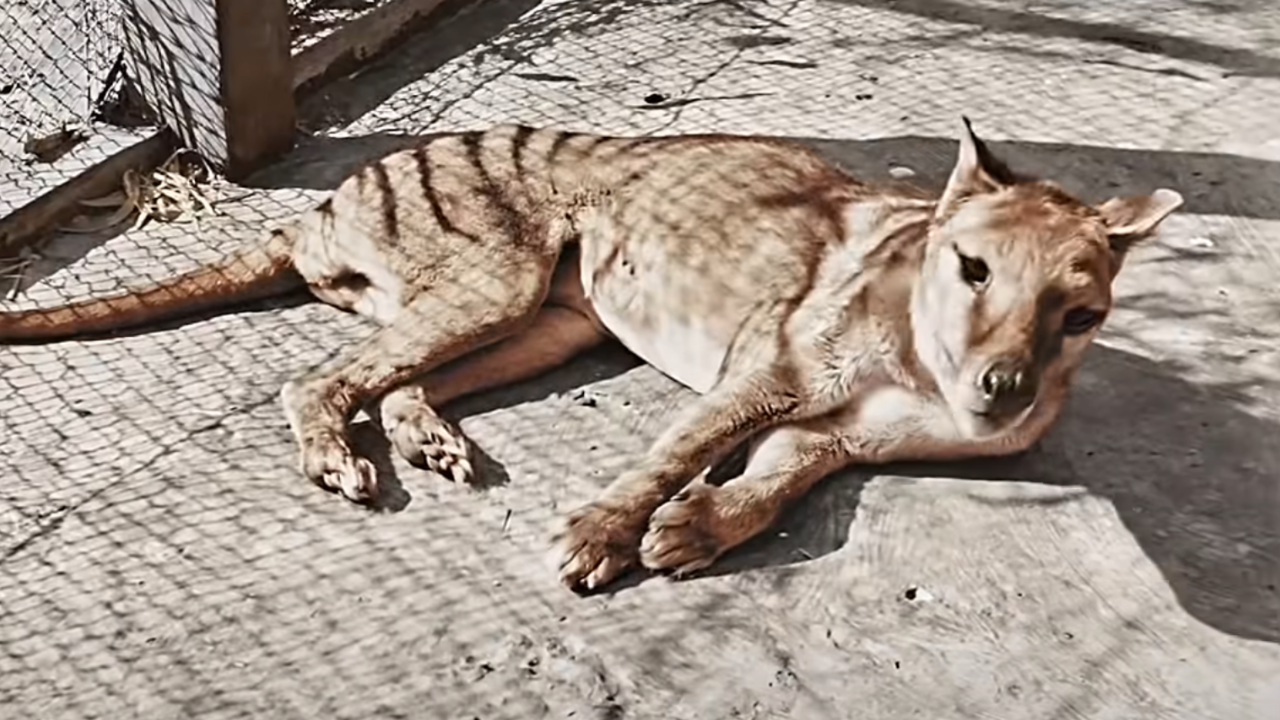Uncovering the Crescent Nail-Tail Wallaby: Australia’s Extinct Hopping Wonder
The Crescent Nail-Tail Wallaby, scientifically known as Onychogalea lunata, was a unique and graceful marsupial native to the arid and semi-arid regions of Australia. Distinguished by the crescent-shaped white mark on its flanks and a small, horny nail at the tip of its tail, this wallaby was an agile and nocturnal creature. Unfortunately, due to habitat loss, predation by introduced species, and changes in land use, the Crescent Nail-Tail Wallaby was declared extinct in the 1950s. Its extinction underscores the fragile balance of Australia’s unique ecosystems and the impact of human activities.
Facts:
| Attribute | Details |
|---|---|
| Scientific Name | Onychogalea lunata |
| Common Names | Crescent Nail-Tail Wallaby |
| Year Declared Extinct | 1950s |
| Kingdom | Animalia |
| Phylum | Chordata |
| Class | Mammalia |
| Order | Diprotodontia |
| Family | Macropodidae |
| Genus | Onychogalea |
| Species | O. lunata |
| Natural History and Origin | Native to the arid and semi-arid regions of Australia |
| Physical Information | Small to medium-sized wallaby, about 1 meter in length |
| Appearance | Brownish-gray fur with a distinctive crescent-shaped white mark on its flanks and a small, horny nail at the tip of its tail |
| Scientist Names | Described by early European explorers and naturalists |
| Region | Australia, particularly in Western Australia and the Northern Territory |
Appearance:
The Crescent Nail-Tail Wallaby was a small to medium-sized marsupial, measuring about 1 meter in length, including its tail. It had a slender build with brownish-gray fur and a distinctive crescent-shaped white mark on its flanks. The most unique feature of this wallaby was the small, horny nail at the tip of its tail, which gave the species its name. Its powerful hind legs and long tail were adapted for agile hopping and balance.
Distribution:
Historically, the Crescent Nail-Tail Wallaby was found in the arid and semi-arid regions of Australia, particularly in Western Australia and the Northern Territory. It inhabited open woodlands, grasslands, and scrublands, where it could find ample food and shelter.
Habits and Lifestyle:
The Crescent Nail-Tail Wallaby was primarily nocturnal, foraging for food during the night and resting in the shade during the day to avoid the harsh sun. It was a solitary animal, although it sometimes formed small groups during feeding. The wallaby’s diet consisted mainly of grasses, leaves, and herbs, which provided the necessary nutrients for its survival in the arid environment.
Physical Characteristics:
The Crescent Nail-Tail Wallaby had several adaptations suited to its arid habitat. Its fur provided camouflage against the dry, grassy landscape, while its long ears helped dissipate heat. The small, horny nail at the tip of its tail was a unique feature, though its exact function remains unclear. Its powerful hind legs allowed for efficient hopping, which was an energy-efficient mode of travel in search of food and water.
Diet and Nutrition:
As a herbivore, the Crescent Nail-Tail Wallaby fed on a variety of plant materials, including grasses, leaves, and herbs. Its diet was well-suited to the arid environment, as it could derive sufficient moisture from the plants it consumed. The wallaby’s digestive system was adapted to break down tough plant fibers, allowing it to extract maximum nutrition from its food.
Behavior:
Crescent Nail-Tail Wallabies exhibited typical marsupial behaviors, including nocturnal foraging and solitary living. They communicated through a series of vocalizations, scent markings, and body language. During the breeding season, males would compete for the attention of females, which resulted in the continuation of the species. The wallabies were also known to dig shallow depressions in the ground to rest during the day, providing some protection from predators and the elements.
Cause of Extinction:
The extinction of the Crescent Nail-Tail Wallaby in the 1950s was primarily due to habitat loss, predation by introduced species such as foxes and cats, and changes in land use due to agriculture and grazing. The introduction of these predators led to a significant decline in the wallaby population, as they had no natural defenses against these new threats. Additionally, the alteration of their habitat reduced the availability of food and shelter, further contributing to their decline.
FAQs:
| Question | Answer |
|---|---|
| What led to the extinction of the Crescent Nail-Tail Wallaby? | Habitat loss, predation by introduced species, and changes in land use. |
| When did the Crescent Nail-Tail Wallaby go extinct? | The 1950s. |
| What did the Crescent Nail-Tail Wallaby eat? | It fed on grasses, leaves, and herbs. |
| Why is the Crescent Nail-Tail Wallaby significant? | It highlights the impact of human activities on Australia’s unique ecosystems and the need for conservation efforts. |
| Are there efforts to study the Crescent Nail-Tail Wallaby? | Ongoing research aims to understand its ecology and the factors leading to its extinction. |
Categories:
- Extinct Mammals
- Australian Wildlife
- Conservation Efforts
- Arid Ecosystems
These details should provide a comprehensive overview of the Crescent Nail-Tail Wallaby, ideal for educational and conservation-focused content on your website.
Views: 14

